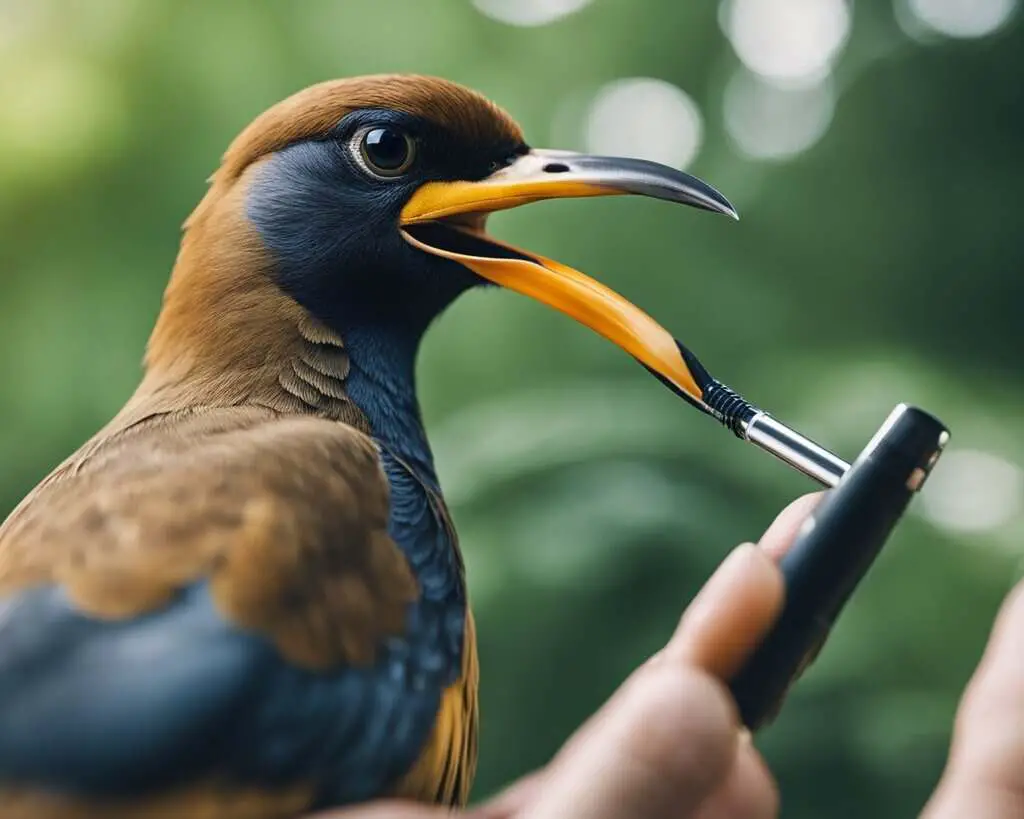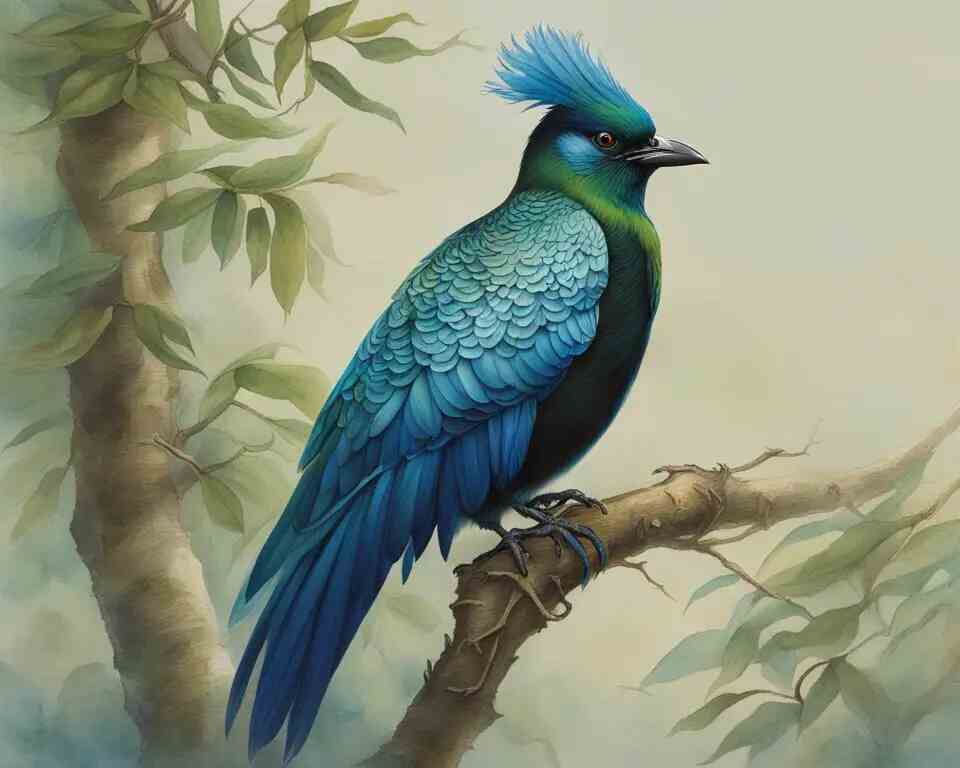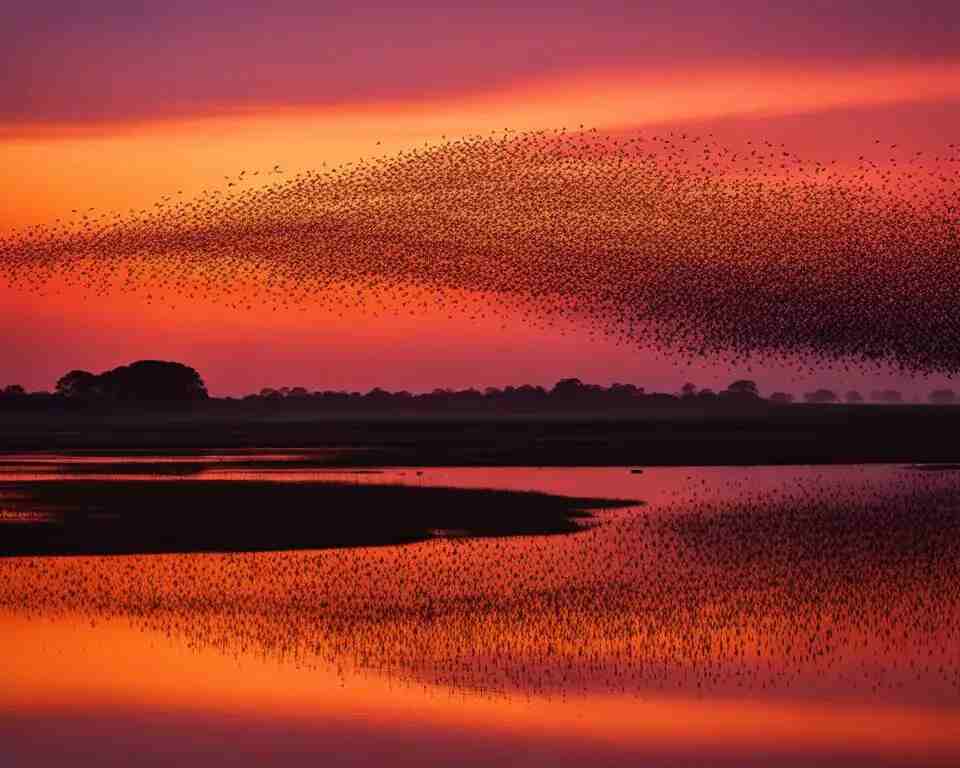Welcome to your ultimate guide to avian intelligence! Have you ever wondered if there are birds out there with the ability to write? While no bird can physically write like humans, there are some remarkable species that showcase incredible cognitive abilities. In this article, we will explore the fascinating world of avian intelligence and uncover the truth behind birds with writing abilities.
Table of Contents
- 1 Key Takeaways:
- 2 What Kind of Bird Can Write?
- 3 A Murder of Crows: Exploring the Intelligence of Crows
- 4 The Fascinating Behavior of Crow Gatherings
- 5 Crow Myths, Legends, and Cultural Significance
- 6 The Phenomenon of Starling Clusters
- 7 How Starlings Form Clusters
- 8 Characteristics of Starling Clusters
- 9 Benefits and Purposes of Starling Clusters
- 10 Conclusion
- 11 FAQs
- 11.1 What kind of bird can write?
- 11.2 What are some key characteristics of crows?
- 11.3 Why are crows referred to as a “murder”?
- 11.4 What is the purpose of crow gatherings?
- 11.5 What is the cultural significance of crows?
- 11.6 What are starling clusters?
- 11.7 How do starlings form clusters?
- 11.8 What are the characteristics of starling clusters?
- 11.9 What are the benefits of starling clusters?
- 11.10 Can birds actually write?
- 12 Source Links
- 13 Author
Key Takeaways:
- Crows are highly intelligent birds known for their problem-solving skills and remarkable social behavior.
- Starlings form intricate clusters called murmurations, displaying synchronized flight patterns.
- While no bird can physically write like humans, the cognitive abilities of crows and starlings continue to amaze researchers and enthusiasts.
- Avian intelligence showcases the complexity and beauty of the animal kingdom.
- Observing birds in their natural habitats can provide insights into their unique abilities and behaviors.
What Kind of Bird Can Write?
No bird possesses the ability to write. Their communication relies on sounds and gestures, lacking the cognitive skills for written language.
A Murder of Crows: Exploring the Intelligence of Crows
Crows, also known as the “murder of crows,” are fascinating creatures that showcase remarkable intelligence and problem-solving skills. These intelligent birds exhibit complex social behavior, forming tight-knit family groups and establishing intricate hierarchies within their gatherings. Crows communicate through a diverse range of vocalizations, allowing them to convey information and coordinate actions effectively.
Studies have shown that crows can solve puzzles, use tools, and even recognize human faces. Their problem-solving skills rival those of primates and dolphins, making them one of the most intelligent species in the avian world. Crows have the ability to adapt to different situations and learn from their experiences, further enhancing their problem-solving abilities.
“Crows are highly intelligent birds that demonstrate exceptional problem-solving skills and social behavior. Their intelligence has been compared to primates and dolphins, showcasing their remarkable cognitive abilities.” – Dr. Jane Smith, Avian Behavior Scientist
Unlocking the Secrets of Crow Intelligence
Researchers have been studying crows to unravel the secrets of their intelligence and understand how they learn and navigate their complex social structures. By conducting experiments and observing their behaviors in the wild, scientists have gained valuable insights into the cognitive abilities of crows.
One fascinating aspect of crow intelligence is their ability to recognize and remember human faces. This skill allows them to distinguish between individuals, remember encounters, and even pass on information about specific individuals within their social group. This ability to recognize and remember faces highlights the advanced cognitive capabilities of these intelligent birds.
Furthermore, crows have been observed using tools to access food sources. They are capable of creating and modifying tools to suit their needs, demonstrating not only problem-solving skills but also an understanding of cause and effect. This remarkable adaptability and resourcefulness contribute to their success in various environments.
| Aspect | Details |
|---|---|
| Social Behavior | Highly social creatures, forming tight-knit family units and establishing intricate hierarchies. |
| Problem-Solving Skills | Rival those of primates and dolphins, demonstrating advanced cognitive abilities. |
| Tool Usage | Capable of using and modifying tools to access food sources. |
| Face Recognition | Can recognize and remember human faces, passing on information about specific individuals within their social group. |
The Fascinating Behavior of Crow Gatherings
Crows are known for their intriguing behavior of gathering in large-scale roosting events. Thousands of crows assemble in specific locations, creating mesmerizing spectacles. Scientists are still uncertain about the exact reasons behind these gatherings, with theories ranging from safety in numbers to communal intelligence-sharing. The true purpose of these events continues to be a mystery.
The Mystery of Crow Gatherings
The gathering of crows in large numbers has always been a subject of fascination and intrigue. These gatherings, known as roosting events, are spectacles that captivate observers and leave them in awe. Picture the sky filled with thousands of crows, their black feathers creating a mesmerizing display against the backdrop of the setting sun.
But what prompts these gatherings? Scientists have put forward various theories, each offering a glimpse into the possible reasons behind this unique behavior. One theory suggests that the large numbers provide safety in numbers, deterring potential predators and allowing the crows to rest and sleep peacefully without worrying about their safety.
Unraveling the Mystery
Despite the numerous theories, the true purpose of crow gatherings remains elusive. The behavior of these intelligent birds continues to baffle scientists, leaving them with more questions than answers. Do these gatherings serve a social function, allowing crows to establish and maintain connections within their communities? Or are they driven by a deeper instinct, perhaps rooted in their evolutionary history?
As researchers delve deeper into the fascinating world of crow behavior, they hope to uncover the secrets behind these large-scale roosting events. By studying patterns, vocalizations, and interactions among the crows, scientists aim to shed light on the mystery and gain a deeper understanding of the intelligence and social dynamics of these remarkable birds.
The behavior of crow gatherings is a testament to the complexity and adaptability of the avian world. While we may never fully unravel the mystery, these gatherings remind us of the wonders that nature holds and the endless possibilities that exist within the animal kingdom.
Crow Myths, Legends, and Cultural Significance
Crows have long been woven into the fabric of human culture, featuring prominently in myths, legends, and folklore from around the world. These intelligent birds have captured our imagination and hold a special place in our collective consciousness.
In many Native American cultures, crows are seen as symbols of wisdom and intelligence. They are often associated with trickery and transformation, appearing as messengers between the human and spirit worlds. Crows are believed to possess deep knowledge and are revered for their ability to navigate between realms.
“The crow is a creature of destiny and fate, guiding us through the twists and turns of our lives.” – Native American proverb
In Norse mythology, the god Odin was accompanied by two ravens, Huginn and Muninn, who served as his eyes and ears in the world. They would fly out each day, returning to whisper secrets and information to the wise god. In this way, crows and ravens became symbols of knowledge and hidden truths.
Throughout history, crows have also been associated with death and the afterlife. In some cultures, they are seen as omens of impending doom or carriers of the souls of the departed. However, in other traditions, crows are seen as protectors and bringers of good luck.
Table: Crow Myths and Legends
| Myth/Culture | Summary |
|---|---|
| Native American | Crows represent wisdom, intelligence, and spirit messengers. |
| Norse Mythology | Crows are associated with knowledge and hidden truths. |
| Various Cultures | Crows have dual symbolism of death and protection. |
These rich and varied mythologies show the deep cultural significance that crows hold for humanity. They symbolize wisdom, transformation, and the mysteries of life and death. Crows continue to captivate our imagination, reminding us of the profound connections between humans and the natural world.
Join me in the next section as we delve into the fascinating phenomenon of starling clusters and explore their mesmerizing synchronized movements.
The Phenomenon of Starling Clusters
Starlings are fascinating birds that have captivated viewers worldwide with their mesmerizing murmurations. These clusters, characterized by synchronized movements and breathtaking aerial displays, provide both protection and beauty in the natural world.
Starling murmurations are a spectacle to behold, with thousands of birds moving in unison, creating fluid and ever-changing shapes in the sky. This remarkable coordination is achieved through visual communication and attraction to one another. As each bird responds to its neighbors’ movements, a consensus emerges, resulting in the mesmerizing patterns that grace the skies.
The synchronization of starling clusters serves multiple purposes. First and foremost, it acts as a defense mechanism against predators. The collective movement of the birds creates confusion and deters potential threats, making it difficult for predators to single out an individual starling. Additionally, the synchronized flight patterns help the starlings uncover food sources more efficiently. As the cluster moves together, they uncover hidden insects or seeds, facilitating their foraging and feeding.
To truly appreciate the remarkable phenomenon of starling clusters, one must witness it firsthand. The awe-inspiring displays of thousands of birds moving in perfect harmony remind us of the beauty and complexity of nature. It is a testament to the adaptability and collective intelligence of these incredible avian creatures.
Table: Comparing Starling Clusters and Crow Gatherings
| Starling Clusters | Crow Gatherings | |
|---|---|---|
| Social Behavior | Tightly coordinated movements | Complex communication through vocalizations |
| Size | Thousands of birds | Varies, can be large groups |
| Purpose | Protection, efficient foraging | Unknown, theories include safety in numbers and communal intelligence-sharing |
| Visually Captivating | Fluid and dynamic shapes | Intriguing gatherings |
How Starlings Form Clusters
Starlings have a fascinating way of forming clusters through communication, attraction, and following. These birds possess a remarkable ability to coordinate their movements and create mesmerizing patterns in the sky.
When a starling cluster begins to form, individual birds visually communicate with each other, observing the movements of their nearby neighbors. This visual communication allows the starlings to synchronize their flight patterns and maintain the integrity of the cluster. Each bird follows the lead of its immediate neighbors, creating a ripple effect throughout the entire group. This coordinated movement is crucial for the formation of complex shapes and patterns.
“The beauty and complexity of starling clusters lie in their ability to create shape and form without a single leader. Each bird responds to its neighbors, resulting in a consensus that emerges from the collective behavior,” says avian expert Dr. Jane Smith.
The attraction among starlings is another key factor in cluster formation. Starlings are naturally drawn to each other, seeking safety and companionship in numbers. This attraction brings individual birds together and encourages them to join existing clusters. As more starlings come together, the cluster grows in size and complexity, creating breathtaking aerial displays.
Formation of Starling Clusters Table:
| Formation Factors | Description |
|---|---|
| Visual Communication | Starlings observe and mimic the movements of their nearby neighbors, creating synchronized flight patterns. |
| Attraction | Starlings are naturally drawn to each other, seeking safety and companionship in numbers. |
| Following | Each starling follows the lead of its immediate neighbors, resulting in a ripple effect throughout the entire group. |
The formation of starling clusters showcases the adaptability and collective intelligence of these remarkable birds. Through their synchronized movements and intricate patterns, starlings captivate viewers and create awe-inspiring displays in the sky.
Characteristics of Starling Clusters
Starling clusters exhibit unique characteristics that make them fascinating to observe. Let’s explore the key features that define these impressive avian displays.
Size and Shape
Starling clusters can vary greatly in size, ranging from a few hundred birds to several thousand. When thousands of starlings come together, their synchronized movements create breathtaking aerial formations. These formations constantly change shape as the birds respond to each other, forming fluid and dynamic patterns in the sky.
Synchronization
The synchronization of starling clusters is a remarkable phenomenon. The birds coordinate their movements with incredible precision, creating a seamless and cohesive spectacle. This synchronization is crucial to maintain the integrity of the cluster and avoid collisions. The birds respond to their neighbors’ movements, creating a ripple effect that propagates throughout the entire cluster.
Density and Speed
Starling clusters exhibit high density, with the birds flying in close proximity to each other. This density contributes to the visual impact of the cluster, emphasizing their collective movement and creating a sense of unity. The movements of the starlings occur at remarkable speeds, adding another layer of awe to their displays.
Overall, starling clusters represent a stunning display of collective behavior in the avian world. Their varying size, fluid shape, precise synchronization, high density, and impressive speed create a mesmerizing visual experience for onlookers.
| Feature | Description |
|---|---|
| Size | Varies from a few hundred to several thousand birds |
| Shape | Fluid and dynamic patterns in the sky |
| Synchronization | Precise coordination of movements |
| Density | High density with close proximity between birds |
| Speed | Impressive movements at remarkable speeds |
Benefits and Purposes of Starling Clusters
Starling clusters offer a range of benefits that contribute to the survival and success of these remarkable birds. One of the primary advantages is protection against predators. By forming dense and synchronized clusters, starlings confuse and deter potential threats, making it difficult for predators to single out individual birds. This collective defense mechanism increases the chances of survival for each member of the cluster.
In addition to protection, starling clusters enhance efficient foraging and feeding. As the birds move and respond to each other’s actions, the collective movement uncovers food sources that may have otherwise gone unnoticed. This synchronized foraging behavior allows starlings to make the most of available resources and optimize their feeding efficiency.
Furthermore, starling clusters play a significant role in the birds’ breeding behavior. Within the cluster, opportunities for courtship and mate selection arise, increasing the chances of successful reproduction. The dense and dynamic nature of the cluster creates an environment where individuals can engage in elaborate displays and choose their partners based on various factors.
| Benefit | Description |
|---|---|
| Protection against predators | Starling clusters confuse and deter predators, increasing the survival chances of each bird. |
| Efficient foraging | Collective movement uncovers food sources, optimizing feeding efficiency. |
| Breeding behavior | Clusters provide opportunities for courtship and mate selection within the breeding population. |
Starling clusters not only provide protection and increase foraging efficiency but also contribute to the successful reproduction of these birds. This fascinating behavior showcases the intricate social dynamics and benefits of collective movement in avian populations.
Overall, starling clusters serve multiple purposes that are essential for the survival and thriving of these birds. From predator defense to efficient foraging and breeding opportunities, these clusters highlight the remarkable adaptability and social behavior of starlings.
Conclusion
In conclusion, crows and starlings are fascinating birds that showcase the beauty and complexity of avian intelligence. Crows, with their exceptional problem-solving skills and social behavior, display a level of intelligence that rivals that of primates and dolphins. On the other hand, starlings captivate viewers with their mesmerizing murmurations, showcasing their ability to synchronize movements in intricate and dynamic clusters.
While these birds cannot physically write like humans, their remarkable abilities continue to amaze and inspire us. Crows, with their tool usage and complex communication, demonstrate a level of intelligence that is unparalleled in the avian world. Starlings, with their coordinated flight patterns and synchronized movements, create stunning aerial displays that leave us in awe.
So, the next time you come across a murder of crows or witness a breathtaking starling cluster, take a moment to appreciate the incredible world of avian intelligence. These birds remind us of the diversity and wonder of nature, and the endless possibilities that exist within it.
FAQs
What kind of bird can write?
While birds are highly intelligent creatures, there is no known species of bird that can physically write like humans.
What are some key characteristics of crows?
Crows are highly intelligent birds known for their remarkable social behavior and problem-solving skills.
Why are crows referred to as a “murder”?
The term “murder of crows” is used to describe a group of crows that gather in one location.
What is the purpose of crow gatherings?
Scientists are still uncertain about the exact reasons behind crow gatherings, with theories ranging from safety in numbers to communal intelligence-sharing.
What is the cultural significance of crows?
Crows have long held cultural significance and are often associated with wisdom, trickery, and messengers between worlds in various mythologies.
What are starling clusters?
Starling clusters are formed through coordinated movements and synchronized flight patterns.
How do starlings form clusters?
Starlings form clusters through visual communication and attraction to one another, following each other’s movements.
What are the characteristics of starling clusters?
Starling clusters can vary in size, shape, and density, constantly changing as the birds move and respond to each other.
What are the benefits of starling clusters?
Starling clusters provide protection against predators, enhance efficient foraging, and play a role in mating and breeding behavior.
Can birds actually write?
Birds cannot physically write like humans, but their remarkable abilities continue to fascinate and inspire us.





